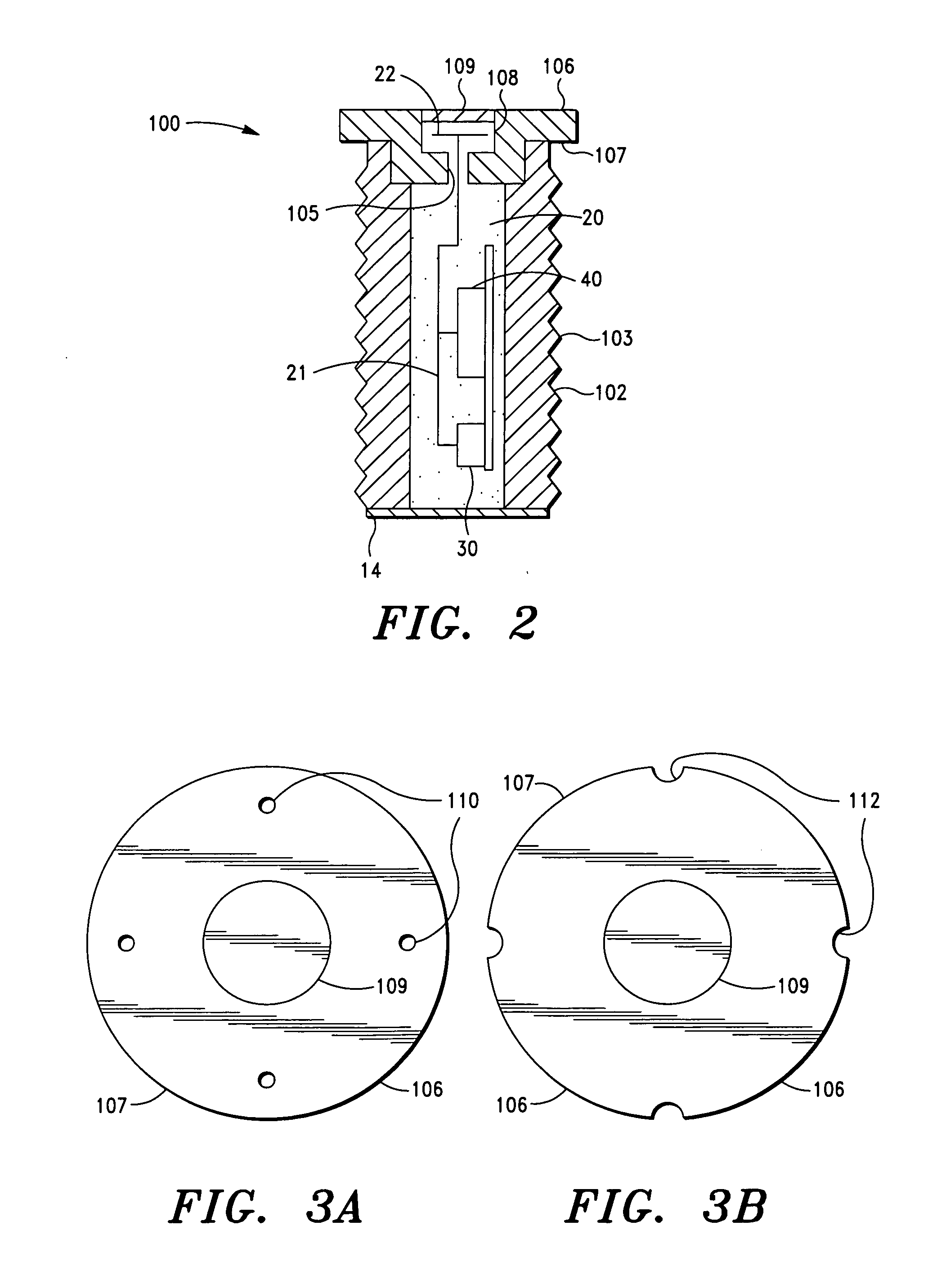Method and system for monitoring pressure in a body cavity
a technology of pressure monitoring and body cavity, applied in the field of apparatus and methods for measuring pressure within the cavity, can solve the problems of intraocular pressure, affecting the accuracy of sensor output, and compromising the flow of optic nerves in susceptible individuals, so as to achieve accurate and stable sensor output
- Summary
- Abstract
- Description
- Claims
- Application Information
AI Technical Summary
Benefits of technology
Problems solved by technology
Method used
Image
Examples
Embodiment Construction
[0068]Before describing the present invention in detail, it is to be understood that this invention is not limited to particularly exemplified apparatus, systems, materials, structures or methods, as such may, of course, vary. Thus, although a number of apparatus, systems, materials, structures and methods similar or equivalent to those described herein can be used in the practice of the present invention, the preferred apparatus, systems, materials, structures and methods are described herein.
[0069]It is also to be understood that the invention is not limited to any particular application used herein in connection with a described embodiment of the invention.
[0070]Further, the terminology used herein is for the purpose of describing particular embodiments of the invention only and is not intended to be limiting.
[0071]Unless defined otherwise, all technical and scientific terms used herein have the same meaning as commonly understood by one having ordinary skill in the art to which ...
PUM
 Login to View More
Login to View More Abstract
Description
Claims
Application Information
 Login to View More
Login to View More - R&D
- Intellectual Property
- Life Sciences
- Materials
- Tech Scout
- Unparalleled Data Quality
- Higher Quality Content
- 60% Fewer Hallucinations
Browse by: Latest US Patents, China's latest patents, Technical Efficacy Thesaurus, Application Domain, Technology Topic, Popular Technical Reports.
© 2025 PatSnap. All rights reserved.Legal|Privacy policy|Modern Slavery Act Transparency Statement|Sitemap|About US| Contact US: help@patsnap.com



